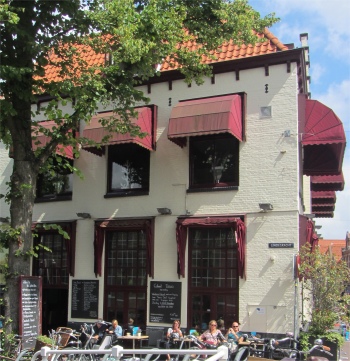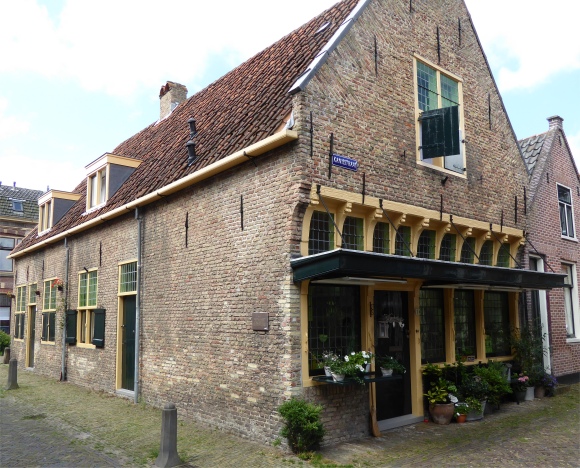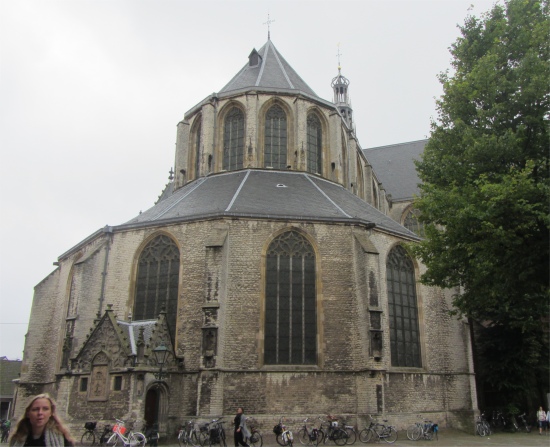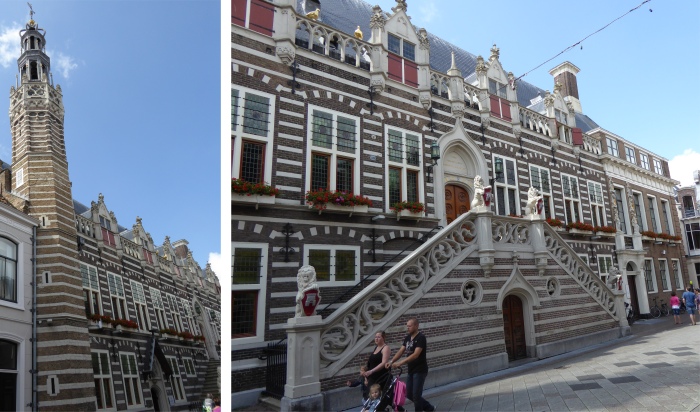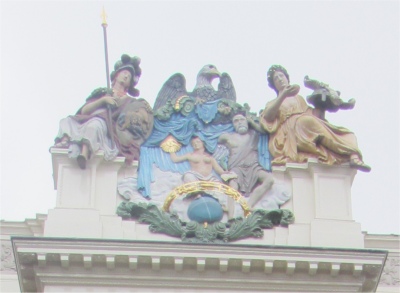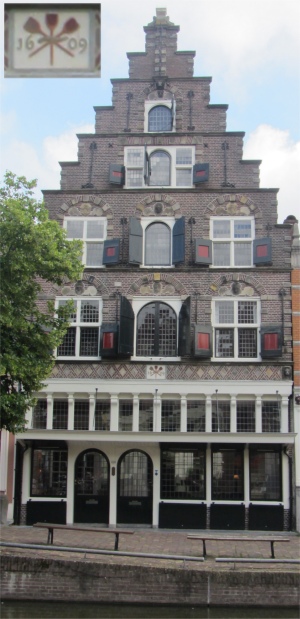 House of Spades (Inset: Baker's Spades in the Lower Centre of the Building) |
As Rex and I sat in the cockpit sipping the first coffee of the day we watched smartly dressed people going off to work. This city certainly seemed to be affluent, and so it should be since the outskirts were awash with industry.
My mind temporarily flipped back to an era when I used to be up in the mornings and dashing off to work in smart dress, but my daydream didn't linger long, I was enjoying retirement. I was snapped out of this idle thought process by the appearance of a different harbour master, a jovial young chap, casually cycling around just making sure the boats moored up had tickets displayed in their windows. We exchanged hearty greetings in Dutch as he cycled by. Fifteen minutes later he reappeared, this time making sure how up-to-date the tickets were. "You have two days to go," he chortled across to us. "Yes, time enough for you to buy us a beer," I shouted back. He saw the funny side, and cycled of laughing down to the next boat along the quay.
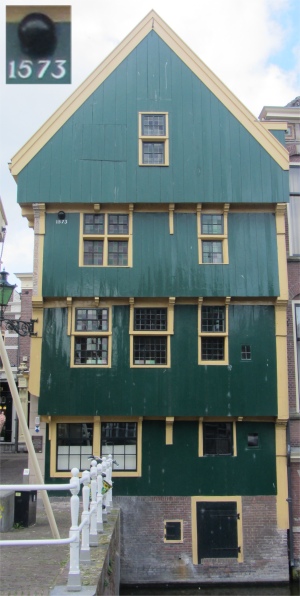 Huis Met de Kogel (Inset: 1573 Canon Ball in the Top Left Handside of the Building) |
Sipping yet more coffee (my carers try desperately to make sure I drink enough liquids), we watched a number of boats leave the Luttik Oudorp at 9am; was it something we said, or did they object to my towel pegged out to dry on the guard rail?
The bewitching hour of 10am approached when the tourist information office would open in the Waagplein. The young chap there was quite helpful, and soon we were off on a punishing route march around the oval shaped old-city, me clutching a self-guided walking tour.
The earliest known reference to the town was recorded in the 900's. The little village grew and became wealthier through trade and agriculture, and in 1254 it was eventually granted a charter to become a city. The oldest part of Alkmaar lies on an ancient sand bank that afforded some protection from inundation during medieval times, though the city was always in a slightly precarious place, being only a few feet above the sea, protected from the sea by a line of sand dunes. It was also considered to be a very important place from a defensive point of view against the West Frisian's whose lands were close by.
The city continued to trade and prosper over the centuries. In the early to mid-1500s a lake near to the city was the first lake to ever be reclaimed by having its water pumped dry by windmills. In 1573, in the Dutch rebellion against the rule of Spain, town after town fell to the Spaniards, until they reached Alkmaar. Alkmaar was put under siege by the Spanish. The inhabitants and the rebels, staunch supporters of the Protestant cause, repulsed each Spanish assault. The Spaniards were not invincible after all! "Victory begins at Alkmaar" became a byword. This victory was considered an important battle in the eventual breaking free from the rule of Spain.
During these times Alkmaar grew into a very important market for all of the produce of the surrounding areas and became the biggest city in the north of the Netherlands. And the market that still runs in the city is a remnant of this. It was during the 1600's that the street map of the old town was brought into being, although much of the city's building were lost in the renovations of the 19th and 20th century. At the turn of the 19th century the city was briefly held by a combination of Russian and English forces, although they were eventually beaten in battle.
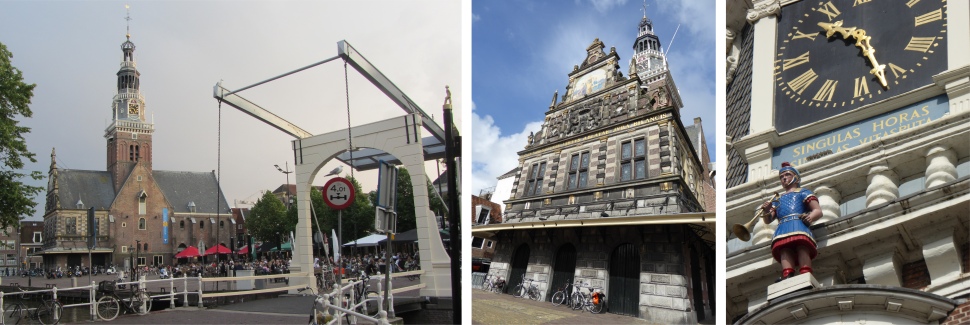 Waagplein and Waag |
 Striking a Deal on Their Cheeses |
We headed up towards the Waag, passing the House of Spades almost at the top of the Luttik Oudorp. This building dating from 1609 had the most beautiful crow-stepped gables of Alkmaar. The gable stone with the fan of baker's spades reminded us of the time when this used to be the house of the Alkmaar pastry cooks.
Just over the bridge at the top of the Luttik Oudorp, we stopped to gaze a while at the Huis Met de Kogel (House with the Bullet). In 1573, during the siege by the Spaniards, Alkmaar was being heavily bombarded by cannons. The story goes that a cannon ball passed through the window of a house of basket maker, Jan Arendszoon, and shattered a chair on which a girl was working on a spinning wheel. None of the seven people present were hurt, and the cannon ball was placed on the gable in memory of this miracle.
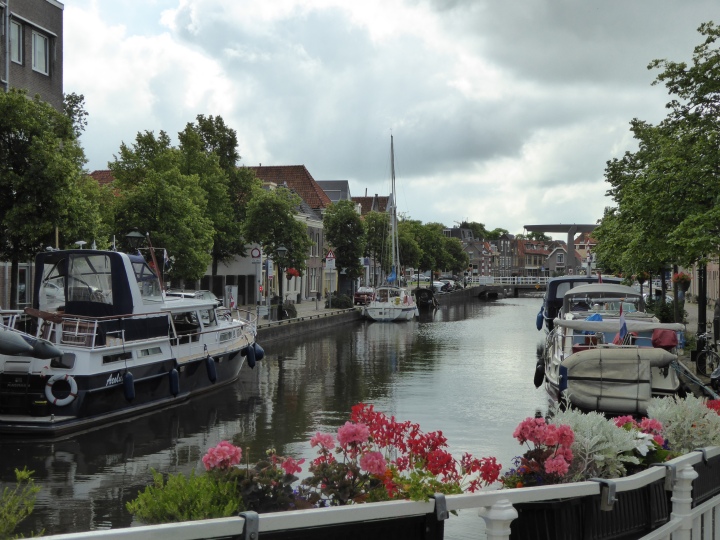 Luttik Oudorp, Duonita Furthest Boat on Left |
The Gothic windows indicate the building's previous ecclesiastical connection. On the front gable at the waterside, the maxim "S.P.Q.A. Restituit Virtus Ablatae Jura Bilancis", (Courage and strength again bestowed the weighing right on the administration and citizenry of Alkmaar), can be seen. This is really a reminder of the successful defence of the people of Alkmaar against the Spaniards in 1573, for which they acquired the weighing right by way of gratitude. In 1712 multiple maxims, such as "Vive memor leti, fugit hora" (Live remembering death, time passes quickly) and "Singulas horas Singulas vitas puta" (Consider each hour a separate life), were placed under the clock face.
 The Leeuwenburg, the Crown and the Silkworm |
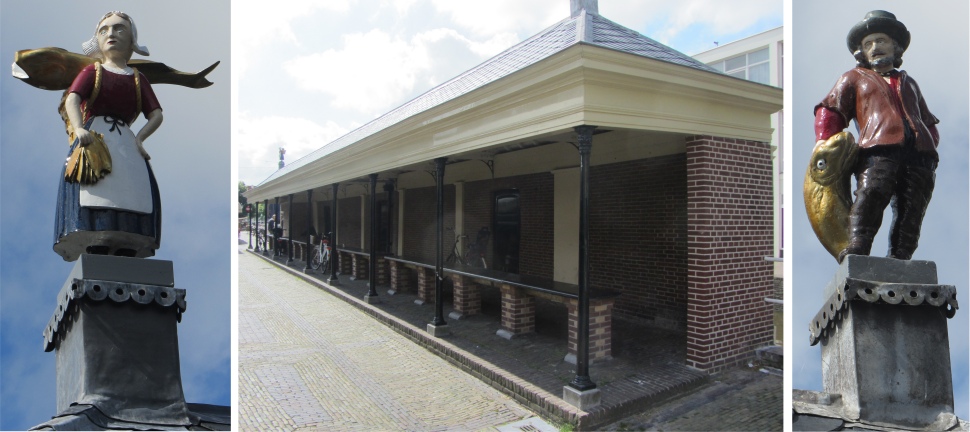 Vismarkt |
 Synagogue - Former House of Cornelis Drebbel |
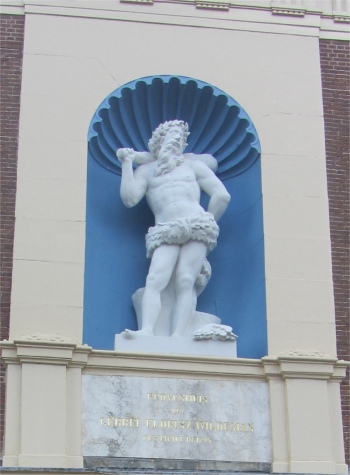 The Wildman Above Entrance to Almshouses |
But the building had been around for a while before serving as a synagogue, it was once the house of Cornelis Drebbel (1572-1633), one of the most interesting citizens of Alkmaar. He was born in Alkmaar, the son of an upper class peasant family. He didn't receive university training but was an apprentice of the famous engraver Hendrik Goltzuis in Haarlem. Goltzuis was engaged in alchemy and was, undoubtedly, the person who enthused Drebbel. Cornelis was the inventor of, among other things, the mercury thermometer, the compound microscope and the perpetuum mobile, this was a clock that indicated the time as well as the date and seasons, without ever needing to be wound up. James I of England heard of the perpetuum mobile, and invited Drebbel to his court for a demonstration. He was highly impressed and commissioned Drebbel to design a submarine; this became his most spectacular invention. He performed the first "sea" trial in the pond of his former home.
In his days Drebbel was a genius and he quickly gained the reputation of magician. He invented things that were far ahead of his times, and many of his inventions are shrouded in mystery. There is, for example, a description of a device that made Westminster Abbey so cold on a hot summer day that the king hastily fled from the building.





